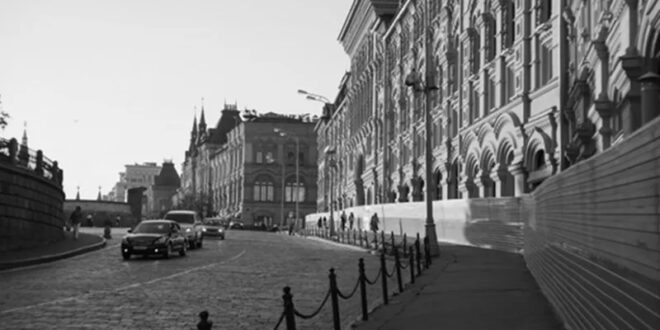On October 20, the Russian state statistical agency, Rosstat, issued a second report predicting that Russia’s population will continue to decline and be down more than seven million people by 2046. Rosstat’s first report came at the end of September and presented estimates that the Russian will decrease significantly in the coming years.
Not including the occupied portions of Ukraine, this report predicted that the population will fall by three million people by 2030 (RBC, October 11; The Moscow Times, October 20). Both projections suggest that Russia’s demographic decline—long predicted by experts—will be far deeper, last longer, and hurt more than the Kremlin has expected (see Russia in Decline, September 13, 2016).
In 2019, the United Nations released an assessment that presented the potential halving of the Russian population by 2100 (The Moscow Times, June 18, 2019). This would lead to numerous problems. A marginalized Russia would lead to some border areas becoming so underpopulated that they might be at risk of being absorbed by others. The decline would threaten ethnic Russian dominance of the country, given that demographic trends among Russians are worse than among many non-Russian, especially Muslim groups.
A significantly lower population would increasingly restrict Moscow’s ability to expand its economy, given its extensive rather than intensive approach, and field the kind of mass army it has traditionally relied on (Noviye Isvesniya, November 2, 2022). Such long-term predictions may turn out to be wrong, but at the very least, they put new pressure on the Kremlin to take the steps necessary to boost birthrates and reduce death rates.
Russian President Vladimir Putin’s war against Ukraine has pulled attention away from this demographic disaster. Putin has remained upbeat on the matter, seemingly convinced that boosting payments to women who have more children and restricting abortions will allow the Russian population to grow again. Russian and Western experts, however, say such an approach is doomed to fail. They argue that only a dramatic improvement in standard of living and a wholesale transformation of societal values can stem this demographic decline. These experts regularly warn that Russians are making a potentially fatal mistake by not focusing on demographics. Yet few Russian politicians believe this is the most difficult problem facing Russia today (Publizist.ru, November 23, 2021; Nakanune.ru, June 16, 2022; Nezavisimaya, January 8; Stoletie.ru, January 24; Tochno.st, June 18).
Rosstat’s two projections could serve to transform these political views. The predictions come at a time when independent Russian demographers are predicting the worst birthrates in decades for the end of 2023 and the beginning of 2024. Additionally, the impact of the decline on the size of the working-age population, and hence the available pool of potential military personnel, is becoming increasingly serious (Nakanune.ru, December 12, 2022; Nezavisivmaya, January 8; Profile.ru, February 21).
The first of Rosstat’s reports was dire but not so bad that it prevented the Putin regime from continuing its upbeat messaging. The state statistical agency announced that the country’s demographic situation is declining at a rate far greater than has been projected as recently as 2020 (RBC, October 11). At that time, Rosstat experts projected that Russia’s population would decline by 2.1 million by 2030; now, they predict the number will likely fall by an additional 50 percent (Eurasia Review, October 15). The report, nevertheless, left open the possibility that the situation could improve in the 2030s. Putin has suggested that the most frightening projections from independent Russian demographers and Western experts can be ignored. By projecting a decline of only three million by 2030, Rosstat also gave Putin the space to continue to claim that Russia’s population will be on the rise by then. The Russian president is not entirely wrong in this if the projected 3.23 million residents of the annexed regions in Ukraine are to be included.
Putin’s claim, nevertheless, is superficial and deceptive, and such complacency could further hurt Russia’s demographics. The Rosstat study makes clear that the Kremlin will achieve only a slight rise, not by improving fertility, mortality, or migration, but through the absorption of new territories (RBC, October 11). For Russia proper, Rosstat reports that the number of births is down, reflecting both a decline in the size of the prime child-bearing cohort of Russian women and a fall in the fertility rate from 1.505 children per woman per lifetime to 1.416, well below the 2.2 rate needed for replacement. Rosstat’s first report did reveal some positive news for Moscow: infant mortality rates continue to fall. This, in turn, allows the Kremlin to make sweeping claims of longer life expectancies. Additionally, immigration, though it has ebbed and flowed in recent years, has helped to fill some gaps.
Rosstat’s second report is far more negative and directly challenges Putin’s claims. The Kremlin leader says that current problems will largely disappear in the 2030s due to his policies and a projected increase in the cohort of prime child-bearing women. The most recent report asserts that Russia’s population, not including the occupied Ukrainian territories, will continue to fall after 2030 and will include 7.68 million fewer people by 2046 (The Moscow Times, October 20). The estimated total is 5.3-percent less than current numbers and is comparable to the population of the Russian Soviet Federated Socialist Republic in 1981. Such a decline means that the number of working-age Russians will presumably decline from 83.47 million to 79.79 million in 2045. Rosstat further projects that, by mid-century, the share of the Russian population under age 18 will decline from 18.5 to 15.6 percent, a trend that suggests the falloff in the number of births will likely continue long after 2046.
Demography is destiny, but only over the long term. Even so, the speed and size of Russia’s demographic collapse under Putin creates real chokepoints for the domestic economy and the war against Ukraine. If the Kremlin does not change course soon, those chokepoints will continue to narrow, prompting at least some Russians to begin demanding change.
 Eurasia Press & News
Eurasia Press & News




